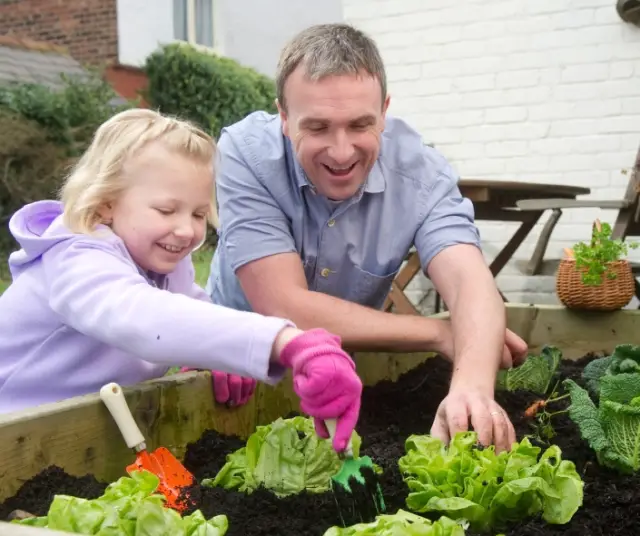The idea of growing your own food at home has gained popularity in recent years as more and more people look for sustainable and healthy options. A home garden not only provides you with fresh and nutritious food, but it is also a rewarding and therapeutic activity. If you're interested in starting your own home garden but don't know where to start, this complete beginner's guide will give you the essential knowledge to be successful.
1. Choose the Right Space
Before you start planting, identify a suitable location for your garden at home. Most plants need at least 6 hours of direct sunlight a day, so find an area that receives enough light. If you have an outdoor garden, make sure the soil is fertile and well-drained. If you live in a smaller space, such as an apartment, you can opt for containers and pots on balconies or windows.
2. Research and Select Your Crops
Before diving into the experience of gardening at home, it is crucial to spend time researching and selecting the crops you will plant. This step will not only allow you to tailor your choice to your dietary preferences, but will also ensure that your plants thrive in the specific environment of your home.
Start by researching the weather conditions in your region, as this will directly influence your crop selection. Some plants are more resistant to extreme temperatures, while others thrive in milder climates. Consider factors such as the amount of sunlight your growing space receives, ambient humidity, and average temperature throughout the year. Also, keep in mind your own and your family's dietary preferences. Do you love juicy tomatoes and fresh salads? Or do you prefer to grow aromatic herbs to season your dishes? Choosing crops that you enjoy consuming will make the experience even more rewarding.
Once you have identified the weather conditions and your dietary preferences, research the specific varieties of each crop. There are different types of tomatoes, lettuce, carrots, among others, and each one has its own characteristics in terms of flavor, size and resistance to diseases. By selecting varieties adapted to your environment, you will increase your chances of having a successful harvest.
Also remember to consider the space available for your garden. If you have limited area, you might opt for crops that do well in containers, such as herbs, strawberries, or peppers. On the other hand, if you have a larger garden, you could venture into crops that require more space, such as zucchini, pumpkins or even dwarf fruit trees.
Don't underestimate the power of diversity in your garden. Growing a variety of vegetables and herbs not only provides a wider range of flavors and nutrients in your diet, but can also help control pests naturally by creating balance in the garden ecosystem.
3. Prepare the Soil
The quality of the soil is key to the success of your garden. Start by analyzing the soil composition in your area and adjust as necessary. Add compost or organic matter to improve structure and fertility. Well-prepared soil provides plants with the necessary nutrients and promotes good drainage.
4. Acquire the Essential Tools
To maintain your garden at home, you will need some basic tools. A pair of gardening gloves, a shovel, a watering can and a hoe are essential items. Depending on the size of your garden, you may also need pruning shears, a rake, and pots.
5. Plant with Care
When planting, follow the specific recommendations for each type of plant. Some require more space from each other, while others benefit from being closer together. Be sure to follow planting instructions for depth and spacing, and water well after planting to establish roots.
6. Irrigation and Maintenance
Proper irrigation is essential for the success of your home garden. Monitor soil moisture regularly and adjust watering frequency as needed. Avoid overwatering as it can lead to disease development and fungal growth. Additionally, remove weeds regularly and apply fertilizers according to the specific needs of your plants.
7. Control Pests and Diseases
Pests and diseases can affect the health of your garden, so learn to identify and control these problems. Use organic methods whenever possible, such as using beneficial insects or rotating crops to prevent disease buildup in the soil.
8. Grow in Containers
If space is limited, consider growing in containers. Pots, planters and raised boxes are excellent options for growing on patios, balconies or terraces. Be sure to use quality soil and provide enough drainage to avoid root problems.
9. Learn from your Mistakes
Growing a garden at home involves learning from experience. You may face challenges and make mistakes, but each one is an opportunity to improve. Observe your plants, experiment with different methods, and adjust your approach based on what works best in your specific environment.
10. Enjoy the Fruits of your Labor
Finally, enjoy the fruits of your labor. The satisfaction of harvesting your own fresh food and knowing exactly where it comes from is incomparable. Share your achievements with friends and family, and plant the seed of interest in growing food in those around you.
With proper preparation, constant care, and patience, you can grow your own fresh food and enjoy the benefits of this healthy and sustainable activity. Dare to start your garden at home and discover the pleasure of harvesting your own food!
